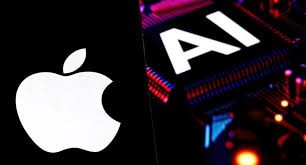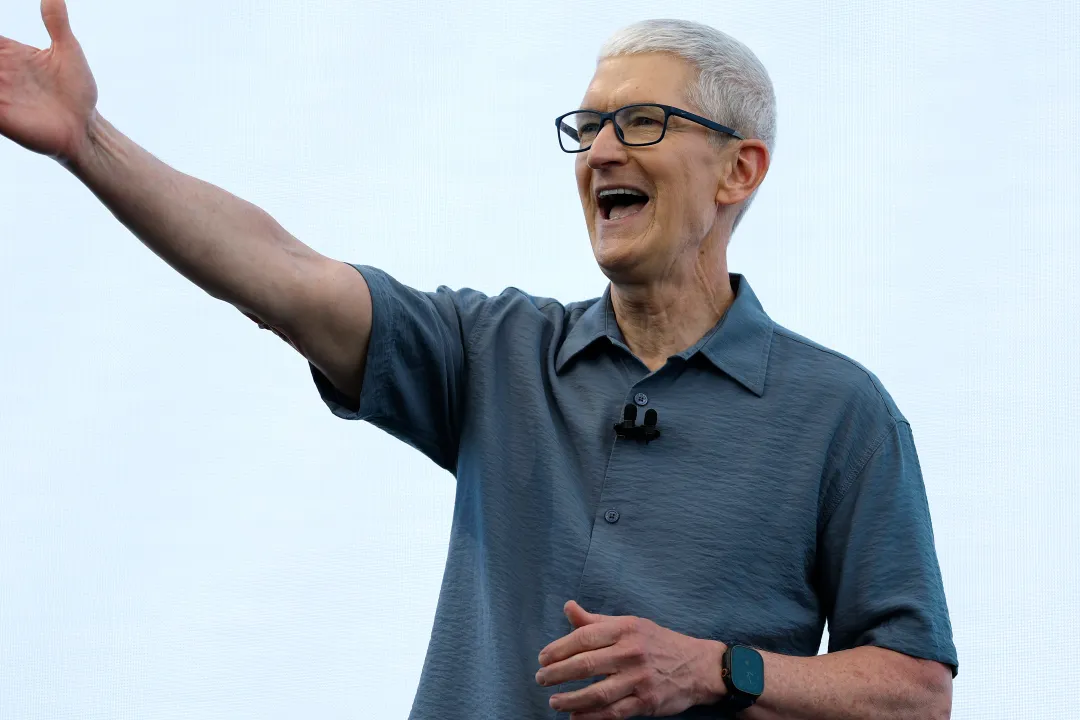Introduction: The Silent Player Is Finally Speaking


For a long time, Apple stayed unusually silent in the public conversation about artificial intelligence. While other tech giants were announcing revolutionary AI models, publishing research papers, and releasing AI tools every few months, Apple kept building quietly — focused more on product experience than flashy announcements.
But the world has changed. The demand for AI in everyday devices has grown exponentially. People are now expecting their phones, laptops, and even watches to be intelligent — not just fast. Apple knows this. And finally, the company has started to open up its AI playbook. This shift is not just about integrating AI into apps. It’s about reshaping how Apple’s entire ecosystem will function in the age of intelligence.
More importantly, Apple is also ready to make strategic acquisitions. A company known for building everything in-house is now willing to buy and collaborate. That’s a big signal — not just for developers and consumers, but for the future of global AI competition.
Why Apple Delayed Its AI Entry — And Why It’s Moving Now
Apple’s philosophy has always been different. Instead of being first, it focuses on being right. Instead of rushing out features, it spends time polishing them until they feel invisible to the user. While this approach worked in the past, the rise of large language models and generative AI presented a new challenge.
Companies like OpenAI, Microsoft, and Google began transforming the user experience in bold ways. AI started writing emails, generating art, understanding human language, building websites, and even summarizing legal documents. Siri, on the other hand, still struggled with simple tasks.
Apple realized that the AI era had matured beyond internal machine learning and needed a more aggressive, visible presence. The company could no longer treat AI like a quiet backend engine. It needed to become the front-end experience itself.
And so, at WWDC 2025, Apple finally revealed its new direction — one that embraces AI fully, but with Apple’s own values at the core: privacy, performance, and product beauty.
Apple’s Unique AI Approach: Privacy, Performance, and Personalization
While most AI today runs on cloud servers, Apple believes in on-device intelligence. That means your iPhone or Mac should be smart enough on its own — without needing to send your data to an external server.
This isn’t just a privacy move. It’s a performance choice. By running AI locally, Apple can reduce latency, improve response times, and keep user data protected. That’s a powerful combination — and one that fits perfectly into Apple’s long-standing philosophy.
Some examples of how Apple is doing this:
- The new Siri understands context better. You can say “Remind me to finish this when I get home” and Siri will know what “this” means.
- In the Mail app, AI can draft responses, summarize long emails, or suggest replies based on your tone.
- In Photos, users can search using natural language — like “Show me pictures of mom at the beach last summer” — and the app delivers, instantly.
- On the Notes app, you can ask for summaries, highlights, or even AI-generated to-do lists based on your writing.
All of this happens without your data leaving the device. This is Apple’s bet: that users will value AI with boundaries, intelligence with integrity.
Apple + OpenAI: A Strategic Move with Deep Implications
Perhaps the most surprising announcement at WWDC was Apple’s integration of ChatGPT into iOS 18. Apple isn’t replacing Siri with ChatGPT. Instead, it’s giving users an option to access a powerful language model for advanced queries — all while keeping control of when and how it’s used.
This partnership signals two things:
- Apple is willing to collaborate, even with other tech giants, if it improves user experience.
- Apple is preparing for something bigger — learning from OpenAI now while possibly building a native Apple LLM for future independence.
It also means developers can now build experiences that combine the smoothness of iOS with the creativity of generative AI — enabling more personalized, dynamic apps across productivity, education, and entertainment.
The Acquisition Mindset: What Apple Might Buy
Traditionally, Apple avoided big, flashy acquisitions. Instead, it quietly purchased small teams or startups with specific technologies — and then absorbed them into its larger vision. But with the rapid pace of AI, Apple seems ready to go beyond that strategy.
Here’s what Apple might target:
- LLM Companies: Apple could acquire or invest in companies building efficient, privacy-friendly language models.
- Voice AI Teams: Enhancing Siri will require new talent in natural speech understanding, emotion detection, and conversational memory.
- On-device AI Startups: Startups working on fast, compact models optimized for phones could become crucial partners.
- AI Hardware Design: As AI demands more from chips, Apple might look to acquire companies that specialize in neural accelerators or power-efficient AI processors.
By owning these technologies, Apple can ensure that the entire AI experience — from silicon to software — remains under its control.
The Vision Pro and AI: A New Era of Spatial Intelligence
Apple’s AI push isn’t limited to iPhones or iPads. The Apple Vision Pro, its most ambitious hardware device in years, will heavily rely on AI. From interpreting eye movements and gestures to generating spatial audio environments, the Vision Pro needs real-time intelligence — not just pre-programmed logic.
With AI, Apple wants to build an interface that doesn’t just respond — it anticipates. Imagine putting on the Vision Pro and being presented with personalized workspaces, media suggestions, or even AI-generated meeting summaries — all floating in your environment.
This blend of spatial computing and ambient AI might be the most transformative part of Apple’s future.
What This Means for Developers and Consumers
For developers, Apple’s new AI direction means:
- Access to powerful new APIs for machine learning and natural language tasks.
- Integration with external models like ChatGPT, while maintaining Apple’s strict user consent policies.
- A chance to build apps that feel smarter, more human, and deeply integrated with device context.
For consumers, the benefits will appear gradually but meaningfully:
- iPhones that understand what you want without needing perfect phrasing.
- iPads that summarize your readings or organize your notes.
- Watches that detect health trends or suggest mindful activities based on your mood.
- Macs that complete tasks, organize workflows, or even prepare content drafts intelligently.
In short, Apple is not turning your device into a chatbot. It’s turning your device into a companion that understands your life better than ever before.
Challenges Ahead: No Easy Path
Despite its strengths, Apple faces some serious hurdles:
- AI Catch-Up: Competitors have years of head start in LLM development and open-source AI infrastructure.
- Balancing Privacy with Power: Some AI features, especially generative tools, work better in the cloud. Apple must balance functionality with privacy.
- Hardware Dependency: On-device AI needs powerful chips. That could make older Apple devices feel outdated faster, leading to backlash.
- Ecosystem Expectations: Developers and users now expect Apple to move faster in AI — a shift from its traditionally cautious approach.
Apple is no longer on the sidelines of the AI revolution. With its playbook now open, its strategy is clear: deliver AI that enhances, not overwhelms. AI that respects, not replaces. AI that’s invisible until it needs to be brilliant.
By combining on-device performance, privacy-led design, and selective partnerships and acquisitions, Apple is crafting a path that is uniquely its own.
This isn’t about beating others at AI. It’s about building an AI experience that feels unmistakably Apple — elegant, private, useful, and deeply personal.
As the world rushes toward artificial intelligence, Apple is reminding everyone that there’s still value in moving smart — even if you arrive a little later.



